Managers face a considerable challenge when it comes to task management. Business workflows are growing yearly, increasing pressure on managers and their team members. Business process management (BPM) tools enable managers to organize tasks more efficiently and to break down a workload into smaller and more manageable chunks to ensure that workload does not impact the quality of the outcome.
But what is business process management? What are BPM tools, and why is automation a large part of the way companies use these tools? And how can you choose the best BPM tools for your company’s business processes? We will explore all of these questions, beginning with the definition of BPM.
What Is Business Processes Management?
Business process management is the skill of finding, designing, measuring, improving, and optimizing business processes.
BPM uses these processes to ensure that companies coordinate every employee in the organization, systems, information, and technology to ensure the organization performs at the highest level to produce the best business outcomes. BPM is crucial to the alignment of OT and IT strategic business investments.
What Are Business Process Management Tools?
Companies use business process management (BPM) tools to find, design, measure, and optimize business processes and Statista predicted that BPM tools will be worth 14.4. billion U.S. dollars by 2025.
The business processes involved in BPM drive the behaviors of employees, business systems, data, and equipment to create strategic business outcomes and improve business processes. Business processes are often repeatable or structured but can also be variable and unstructured. But what are the three types of BPM tools?
The Three Types Of Business Process Management Tools
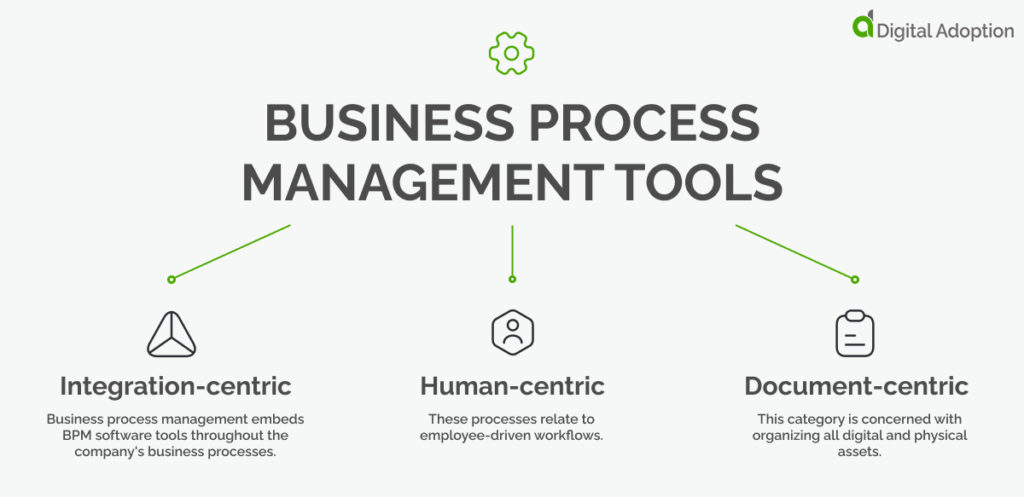
BPM tools fall into three categories:
- Integration-centric: Business process management embeds BPM software tools throughout the company’s business processes.
- Human-centric: These processes relate to employee-driven workflows.
- Document-centric: This category is concerned with organizing all digital and physical assets.
IT teams commonly use integration-centric tools as they are responsible for software solutions and integration. IT teams often integrate large enterprise-level systems such as CRMs and ERPs to boost cross-functional team productivity using complex coding or APIs.
On the other hand, document-centric tools involve creating a document after several different staff members have contributed and approved it. Contracts and legal documents are examples of the output of this process which occurs in contract management, law, and procurement departments.
Human-centric tools require human input rather than wholly automated processes, balancing aspects of automation with human intervention. Workflow management software solutions are human-centric BPM tools and usually have a visual user interface to help employees understand, interact with and act on business processes.
Staff uses human-centric BPM tools to plan daily meetings and online chats. This category is the most important for managers as it allows analysis and improvement of how the staff interacts. It is complex and has the most significant impact on business outcomes, as people are the core of any organization.
What Are The Benefits Of Using BPM Tools?

There are many benefits to using BPM tools to optimize processes, starting with improving output consistency and quality.
Improve output consistency and quality
BPM tools allow companies to improve their consistency of output and the quality of products and services, especially when utilizing process automation.
Lower rate of failure
Another advantage of automated process management bpm tools is a reduction in the failure rate, increasing the bottom line.
Reduce your costs
Completing tasks more efficiently reduces costs as the team gains time to focus on more complex tasks, improving service quality using the same resources to boost revenue.
Optimize time usage
Every dedicated staff member feels like they’re working against the clock to complete projects. But BMP tools can automate many processes to unlock resources to be spent on more demanding tasks.
The Six Lifecycle Stages Of Business Process Management Tools
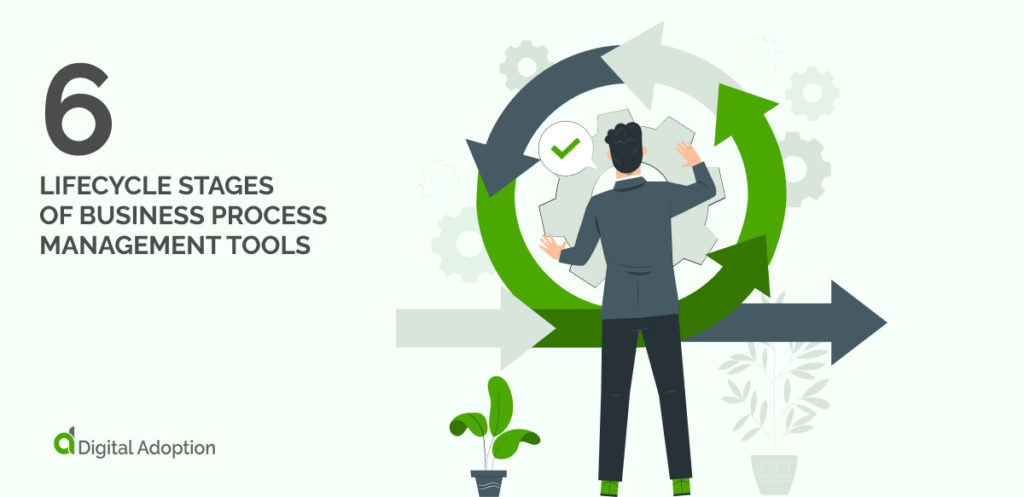
The BPM tools lifecycle is in six stages, and managers use it to ensure that their company is investing in the right tool for the purpose. The first stage in the lifecycle is the design stage.
- Design
Define the business processes the organization needs to improve.
- Model
Consider the best approach to improving processes.
- Execute
Carry out the new business processes within a small group to test their effectiveness.
- Monitor
Develop KPIs to measure the success of each business process improvement.
- Optimize
Continuously monitor the improved business processes.
- Review
Review the business processes at six to twelve months intervals and adjust your digital toolset as necessary.
Frameworks For Improving Business Process Management
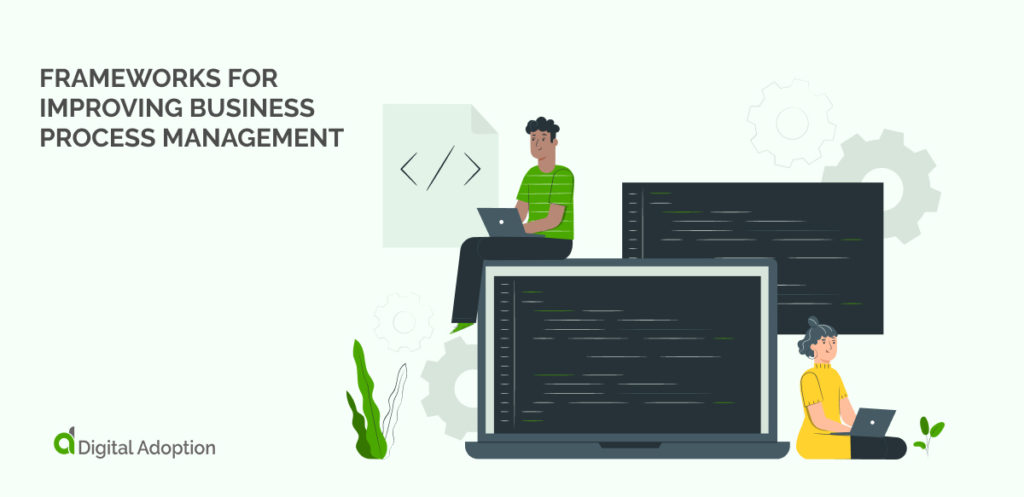
Companies use frameworks within BPM to guide performance and process optimization. Lean, Six Sigma, and TQM are some frameworks organizations utilize as part of BPM.
Six Sigma
Motorola created Six Sigma to improve its services and products and has evolved to include Lean principles, and many large organizations now utilize it. Six Sigma is a rigorous and systematic routine that has provided many companies with a BPM framework to improve products and services, increasing customer satisfaction and revenue.
Six Sigma involves data collection, analysis, and analytics, providing solutions to business process issues. The Six Sigma framework contains four elements: Philosophy, the toolset, methodology, and metrics.
- Philosophy: Six Sigma states that all work processes can be defined using DMAIC: Define goals and boundaries, Measure the current situation, Analyze the cause of obstacles, Improve the situation with solutions, and Control by reviewing and adjusting based on analysis. When a company controls inputs, they control outputs.
- Methodology: Six Sigma’s methodology is the DMAIC approach explained above.
- Toolset: Six Sigma includes qualitative (experience-based) and quantitative (number data) to optimize the improvement of processes. Process mapping and effects analysis (FMEA) are examples of this.
- Metrics: The metrics aspect of Six Sigma involves math to explain the chance of success and includes the reason the framework is called Six Sigma. Six Sigma quality performance equals 3.4 defects for every million opportunities, which signifies a 1.5-sigma shift within the mean.
Six Sigma is often used with the Lean framework to get the best results.
Lean Six Sigma
Lean Six Sigma incorporates the Lean framework and is similar to Six Sigma, using similar means to achieve its aims. However, Lean Six Sigma emphasizes defect prevention through reducing waste, which is the emphasis of Lean, meaning thin and efficient, rather than Six Sigma alone, which focuses on defect detection.
TQM
Total Quality Management (TQM) is a framework that encourages the belief that all employees at every level can drive performance improvement to benefit their organization.
The principles of TQM are called the PDCA (Plan, Do, Check, Act) or the Deming Cycle, named after the man who developed TQM in the 1920s.
These principles include strong leadership, driving out fear of failure, on-the-job training, focusing on non-numerical goals, and implementing a program of self-improvement, which could be attributed to the CPD framework today.
TQM differs from Six Sigma as it emphasizes organizational responsibility for improving processes. And although TQM focuses on operations, like Six Sigma, it represents a move away from over-reliance on statistical data and a more cohesive approach to continuous improvement of processes. In contrast, Six Sigma lends itself to an intensively short period of activity. So what examples of BPM tools can we see in use today?
Five Examples Of BPM Tools
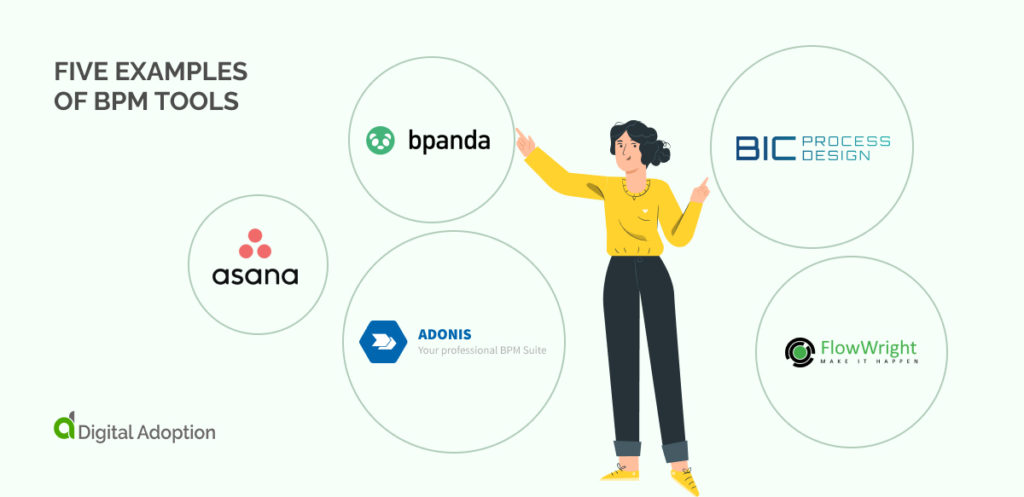
BPM tools are essential for any business today, tracking processes and streamlining workflows. Looking at five BPM tools and platform examples will help you decide the best one for your business.
1. Adonis
Adonis is a business process management platform designed for all BPM process management. It contains a process modeling assistant which gives business users the right tools to develop processes quickly and easily. It also features an analytic BPM tool that simplifies the execution and monitoring phases.
2. Asana
Asana is a human-centric BPM tool familiar to most office employees for its enhanced collaboration capabilities. This BPM tool aims to streamline task management as all team members receive a unified flow of information without being informed individually. Asana contains customizable lists so teams can be aware of all meetings in real time.
3. BIC Process Design
BIC Process Design specializes in one of the most popular processes management bpm tools, giving a complete overview of operations and flagging which need attention or improvement. BIC Process Design also contains workflow and analytical features to make it a useful general BPM software.
4. Bpanda
The Bpanda BPM platform specializes in planning and visualizing BPM process management using a UI designed for less experienced business users. Bpanda helps create workflows to communicate BPM visions to teams and motivate them to begin a project.
5. FlowRight
FlowRight is a BPM platform that focuses on improvement by business process automation. (BPA) FlowRight uses graphical workflow automation visualizations and business intelligence metrics to drive process improvement. FlowRight is flexible and customizable, capable of being used as a cloud-based solution, .Net hosted environment, or on-premise.
When choosing a BPM tool, it is also worth considering a business process management platform with a drag-and-drop interface for easy navigation.
Why Do Companies Need To Automate Business Processes?
Automated workflows allow technology to carry out repetitive tasks to free up time so that staff can spend on more complex business processes that robotic process automation cannot achieve, increasing efficiency and reducing errors.
Automation also improves the employee experience, as it removes the need for staff to complete the repetitive tasks that lower wellbeing. Examples of processes that companies should automate are data entry and simple help-desk queries.
When a company automates business processes, it creates time to review existing processes via process mapping. This action ensures that process management becomes part of the daily philosophy involving constant improvement in every task. So automation is a large part of BPM improvement, but what other features help companies get the best out of BPM?
Which Additional Features Do You Need Within Your Business Process Management Software?
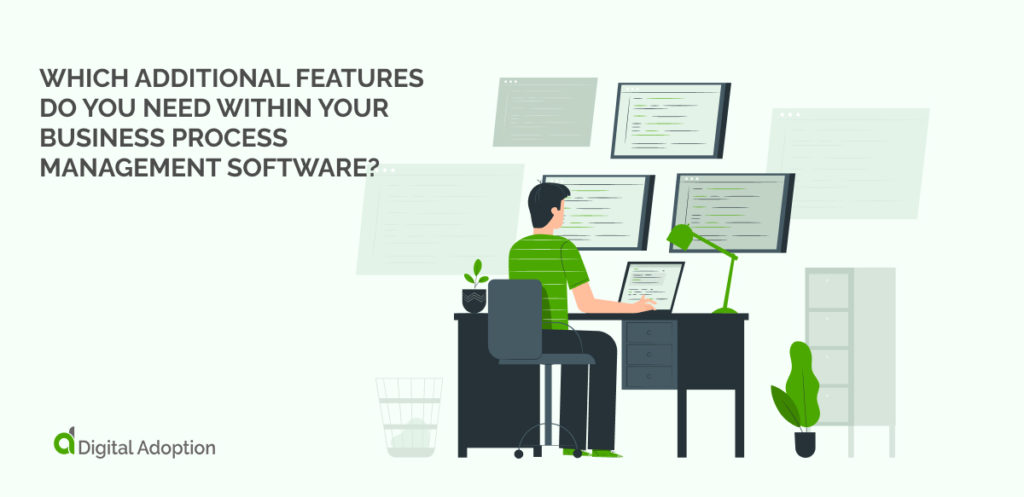
Several features are essential to companies looking to improve their process management via BPM tools.
Cloud-based deployment
Cloud-based deployment is ideal for BPM software solutions as it is scaleable and adaptable, and suppliers can alter the price easily per changing company needs.
Visual process modeling and diagramming tool
There are four process flow diagram categories, and choosing the right one for your business needs is essential. The No-Modeling Tool utilizes coding to implement the process. The Data Collected Through UI Forms provides data about the business process by capturing it through forms. The Visual Interface Based On Activity option maps out the BPM process, including dealing with defect exceptions and rejections at each level.
The final option is the Visual Interface Based On Business Steps, which is similar to the third option but doesn’t alert the users to the corner case representations. It instead allows users to focus on the main path of a specific business process and automates exception paths.
McKinsey reports that batch production industries such as pharmaceutical companies often use process modeling. The reason is that the operational processes conducted by the equipment which produces products in large quantities can be adjusted to raise revenue or increase product and service quality.
Low-code/no-code tools with an intuitive drag-and-drop interface
A low code platform is a simple BPM feature that uses a drag-and-drop interface to condense and speed up the process, allowing staff to capture and edit data. Companies can customize a low-code platform for power users to enable more advanced features.
Collaboration tools
Collaboration is the core of BPM, so investing in the most appropriate collaboration tools for your business is essential. Asana and Slack are collaboration tools that require a fee, and Microsoft Teams is a free option.
Process analytics data and process performance
BPM systems need excellent reporting features above simple workflow management software. Analytics processing for data and process performance should allow users to:
- Calculate the average time to complete specific ‘step’ and ‘complete’ items
- A snapshot containing all open items
- Information on how frequently an item is rerouted or rejected.
Although it is often not the case for BPM tools, reports and analytics features should be highly customizable and have the option not just to export as CSV files. The best BPM software solution will allow users to create custom graphs and charts.
API connector and integrations with third-party applications
BPM tools coordinate all organizational processes, so if a BPM software solution does not fit with all the tools used for collaboration and analysis within your existing business processes, it will not offer the best investment.
BPM tools must integrate with other popular applications for companies to feel the most significant benefit. Comprehensive API support is essential to integration, webhooks, and REST APIs.
Role-based user access control
Often it is essential to safeguard the most sensitive information. A role-based user access control feature informs which users can access certain information based on their role. Sections of information can be hidden from certain users using field categories or groups.
Data and document management functionality
Document-centric BPM tools and features are essential for communicating ideas for how to improve processes. Documents can go back and forth between staff several times, so functionality must ensure edits are easy to make and the software saves them properly before the document goes to the next staff member.
Project management integration
Teams are essential in mixing perspectives to get the most out of performance management projects. BPM projects can take long periods and are an ongoing process, so project management integration is an essential feature of any BPM platform.
Workflow automation
All BPM tools must contain features to automate business processes efficiently. Automation increases employee productivity and efficiency, reducing human error in data entry.
Now that you have established the important features of your next BPM tool let’s look at the best way to choose the most appropriate tool for your business needs.
Considerations: Choosing A Business Process Management Tool
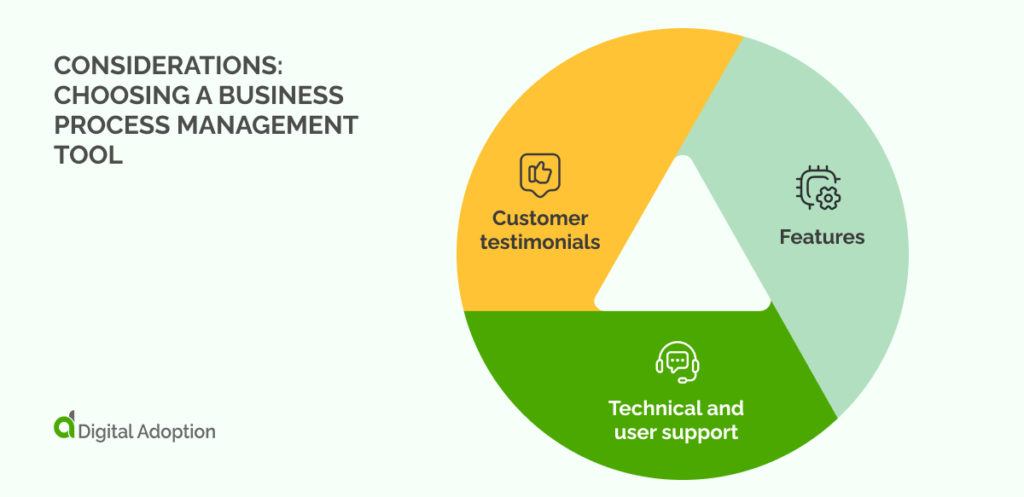
BPMs represent a significant investment, so it makes sense to take the time to choose the best one for your needs. The best place to begin research is customer testimonials.
Customer testimonials
It’s always best to start by reading other users’ experiences with a BPM tool to ensure you get the best investment. Check websites that feature customer experiences to ensure that a BPM tool’s claims are justified.
Features
Thoroughly research the features of BPM software suites to understand what you are getting and whether it fits your business needs. Splitting up the BPM tools into the three categories of integration-centric, human-centric and document-centric will help you to decide which features you require so you can tick these off as you select a BPM tool.
Technical and user support
Support is essential to staff getting the most out of BPM platforms and tools. Ensure that the type of support is needed, as 24/7 support may be worth the investment for an SME with no IT department but may be unnecessary for large enterprises. Check that a BPM platform comes with user support and if an extra fee is involved.
Check the quality and appropriateness of BPM tools before investing to ensure that the digital tool meets your needs.
Which 4 BPM tools are best suited for small and medium-sized enterprises (SMEs)?
Many low-cost and freeware BPM options are available to meet the needs of SMEs looking to improve process management. The first of these is a freeware BPM tool named Bizagi.
1. Bizagi
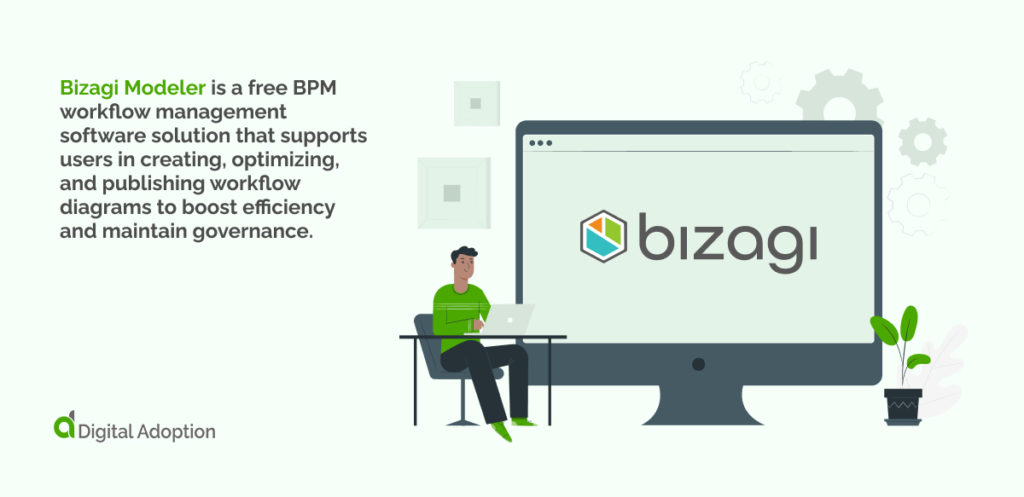
Bizagi Modeler is a free BPM workflow management software solution that supports users in creating, optimizing, and publishing workflow diagrams to boost efficiency and maintain governance. The collaborative software allows users to produce and record business processes on a central cloud repository to optimize organizational productivity. Bizagi offers scalability as SMEs can upgrade to the paid version when they scale up.
2. Camunda

Camunda is open source, meaning programmers can legally alter it to custom specifications. Camunda offers workflow and decision automation tools that improve scalability, business resilience, and visibility.
3. Wrike
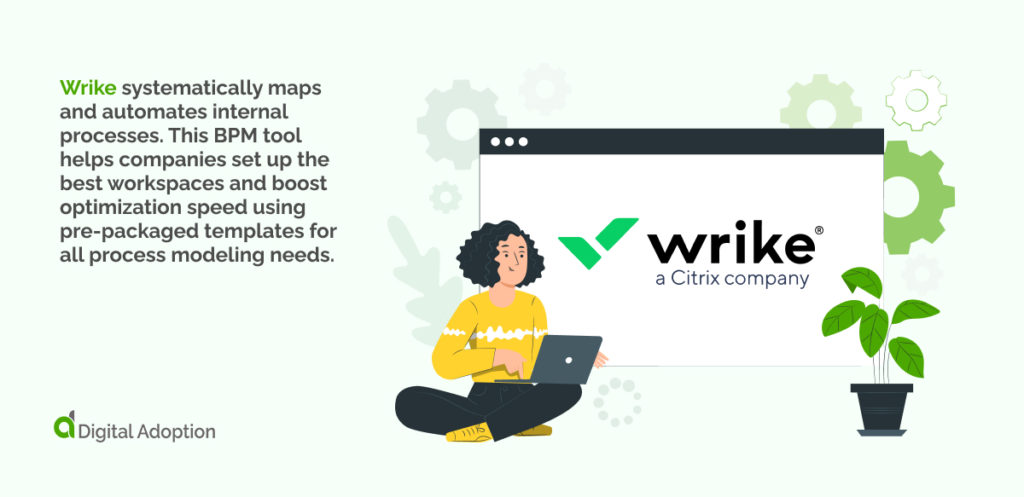
Wrike systematically maps and automates internal processes. This BPM tool helps companies set up the best workspaces and boost optimization speed using pre-packaged templates for all process modeling needs. Wrike allows collaboration by eliminating workflow bottlenecks and silos, making processes transparent and accessible for all users of different roles.
4. Zoho One

Zoho One offers over fifty business applications in one software solution to cover every stage of the BPM process. ZohoOne offers business process management tools for process modeling, analytics engines, and an intuitive interface to collaborate with colleagues on project work.
Many paid and free options exist for SME companies, but ensure that you are aware of the lack of user support and potential lower level of security that may come with open source freeware.
The Future of BPM Tools
BPM is already used a lot in business, so what form will it take in the future? The automation component of BPM tools will likely become more prevalent, complex, and powerful and be combined with AI to allow BPM tools to carry out more sophisticated tasks and adaptive automation.
Future BPM tools will build on the existing capabilities to provide staff with collaborative, social tools and performance optimizing features to create constantly reviewed and improved processes to widen success opportunities for growth and expansion.
Get The Best Out Of Your BPM Tool
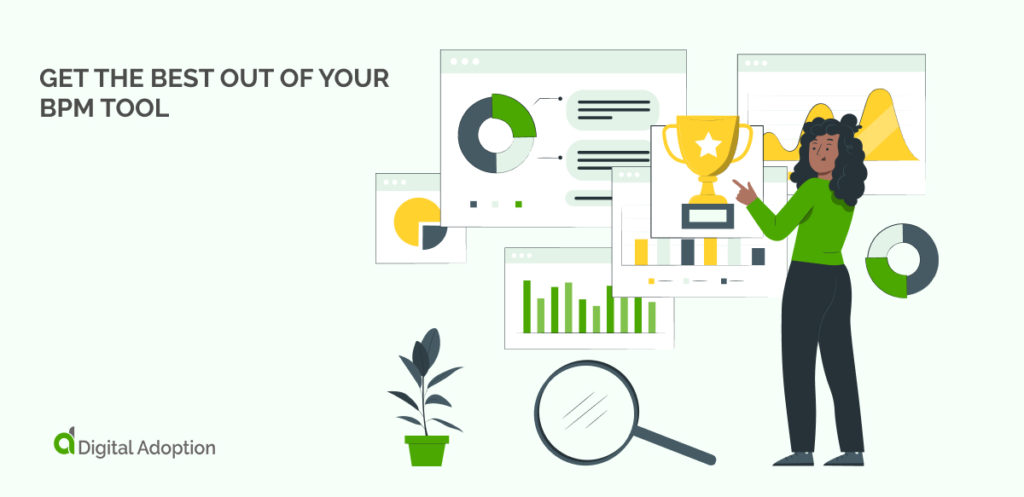
BPM tools allow managers to track tasks, analyze processes and optimize workflows faster than ever. Efficiency is a high priority for companies of any size today. BPMs using automation are at the core of ever-changing methods for creating efficiency to reduce errors and optimize staff processes.
Many BPM tools are available, and researching your needs and the features required will allow the best investment. When you have purchased your new BPM, you will equip yourself to optimize processes, making your business resilient, sustainable, and agile, increasing revenue and securing success.



